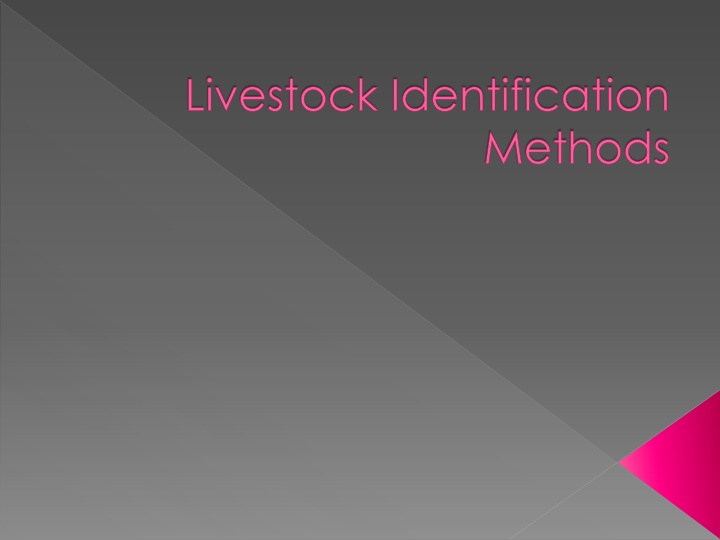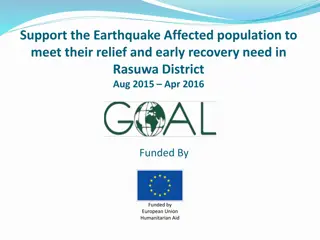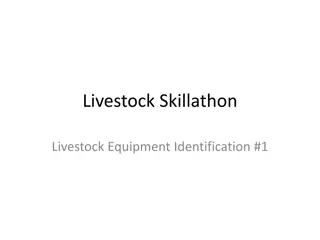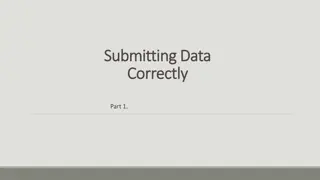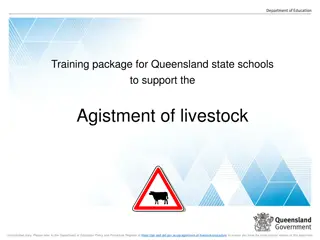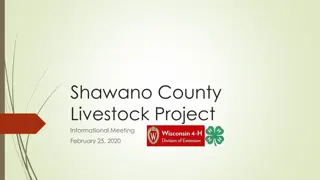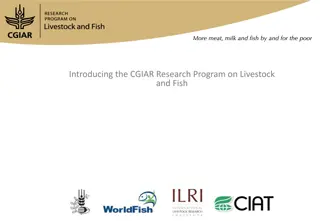Livestock Identification Methods: Exploring Different Techniques
Explore the importance of livestock identification, methods used, and their significance in various situations. Understand why animals need to be identified, from proof of ownership to disease eradication. Learn about types of identification like branding, ear notching, tattooing, and more, each with its own benefits and drawbacks.
Download Presentation

Please find below an Image/Link to download the presentation.
The content on the website is provided AS IS for your information and personal use only. It may not be sold, licensed, or shared on other websites without obtaining consent from the author.If you encounter any issues during the download, it is possible that the publisher has removed the file from their server.
You are allowed to download the files provided on this website for personal or commercial use, subject to the condition that they are used lawfully. All files are the property of their respective owners.
The content on the website is provided AS IS for your information and personal use only. It may not be sold, licensed, or shared on other websites without obtaining consent from the author.
E N D
Presentation Transcript
Livestock Identification Methods
Objectives Explore the reasons for livestock identification Explore and discuss the various methods of identification Evaluate which methods are necessary in different situations
Why Identify Animals?? Proof of Ownership Accurate Records Disease Eradication Food Safety Breeding Global Trade Emergency Management Species Tracking
Types of Identification Hot Iron Brand Freeze Brand Paint Brand Horn Brand Ear Notching Tattoo Microchip Eartag Neck/Leg chain/Bands Nose Printing
Branding Branding has been used for centuries Began in the US in the 1800 s Uses a metal object to burn, freeze, or paint a mark on the animal Primarily used in cattle and horses Shows onwership, NOT animal s individual ID
Hot Iron Branding Uses fire or electric brand Permanent Steel or copper is used Damages the hide States have different branding laws
Freeze Branding Uses liquid Nitrogen Copper Branding Iron Permanent Destroys the pigment cells Hair grows back white Virtually painless for the animal
Paint Branding Uses Paint and standard iron Temporary Used primarily at sale facilities Used to identify offspring
Horn Branding Uses small fire branding iron Permanent Disadvantages include: Hard to see at a distance Horn can be cut or knocked off
Ear Notching Used on many livestock species Permanent Identifies both ownership & individual ID Various methods but standardized in swine
Tattoo Permanent Individual identification Used on many classes of livestock Required by some registries Hard to see Can fade to unreadable
Microchip - RFID New technology Internal & external Essentially permanent Used to establish ownership Traceability Food Safety Disease eradication
Ear Tagging Multiple species Somewhat permanent Easily Removed Multiple uses Traceability Import/export Difficult to read
Neck/Leg Chains/Bands Temporary Used mainly in poultry & dairy industry Used in migratory birds Species tracking Can be color coded
Nose Prints Each is unique Used in some registries and required for many shows
Summary Identifying livestock is necessary for many aspects of livestock production. Permanent or temporary methods are used as applicable. Methods used are determined by the owner or requirements set forth by registries, government, or other entities. IDENTIFICATION = PRODUCTION
